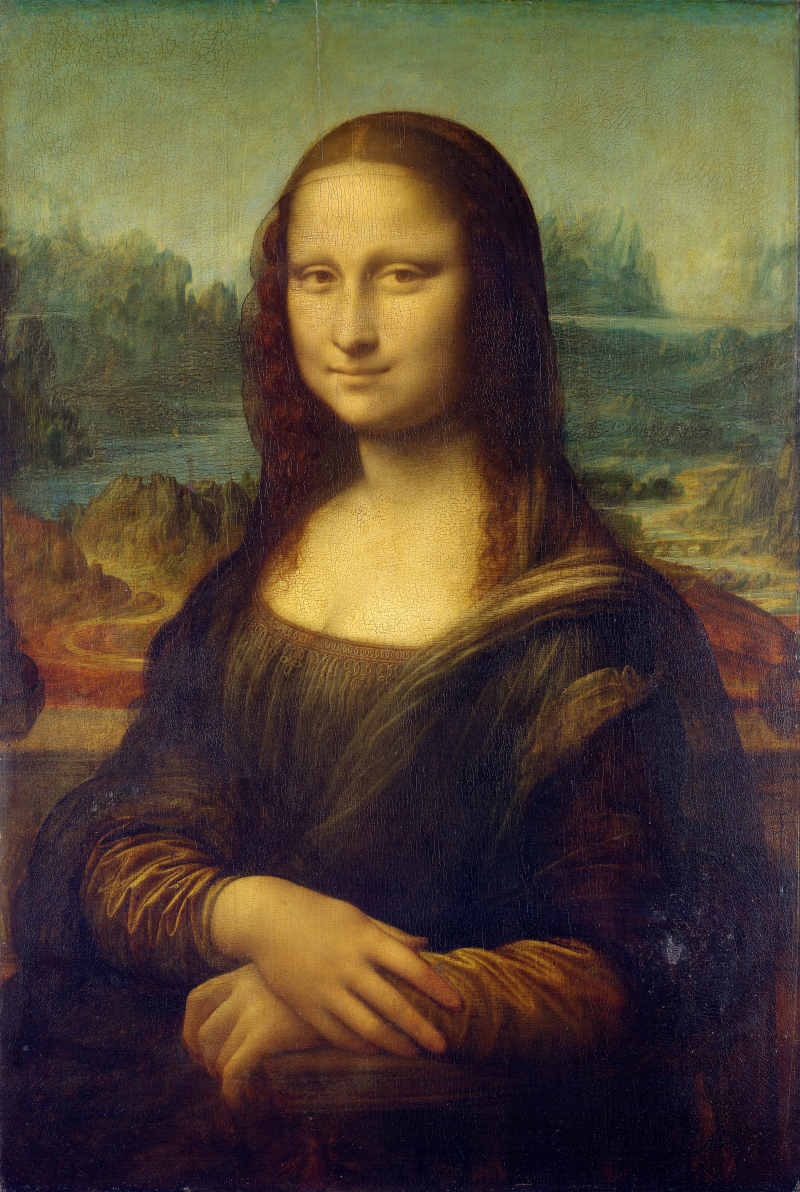Mona Lisa
The Mona Lisa, a mesmerizing oil painting by Leonardo da Vinci and housed at the Louvre since 1804, stands as a paragon of artistry and mystery. Each year, millions crowd the Louvre, eager for a glimpse of da Vinci's most famous work. The painting's allure lies not just in its artistic brilliance but also in its curious iconography and storied history. This together prompts the question: Why does the Mona Lisa maintain its fame today?
The painting depicts Lisa Gherardini, a noblewoman of Florence. She is seated against a dreamlike, remote landscape. This backdrop is painted in sfumato, a technique that produces a haze-like effect. It adds to the portrait's mysterious allure. Gherardini's subtle smile and gentle gaze, which appears to follow viewers across the room, have been subjects of intense scrutiny and admiration for centuries.
The Mona Lisa is more than a portrait. It's a window into da Vinci's genius. The painting is painted with oil on a wood panel. The artwork features Lisa Gherardini, wife of Francesco Giocondo, set against an imaginative landscape. This backdrop, rendered in sfumato, adds depth and mystery to the piece. Her enigmatic smile and the ambiguous nature of her gaze, which seems to follow viewers around the room, have sparked endless debates and fascination.
Gherardini's smile has been a subject of intrigue for centuries. It's this smile, along with her seemingly alive gaze, that makes the Mona Lisa an active participant when viewed, rather than a passive subject. Interestingly, German researchers assert that the 'Mona Lisa effect'—where the eyes seem to follow the viewer—is not present in this painting. They claim she's looking 15 degrees to your right, adding yet another layer to the painting's mystery.
The Mona Lisa's fame is not solely due to its artistic merit. Its history is laced with drama. After Leonardo's death in 1519, the painting remained in France, transitioning from royal possession to its current home in the Louvre. However, it wasn't until a 1911 heist by Louvre employee Vincenzo Peruggia that the Mona Lisa's fame skyrocketed. Peruggia's attempt to return the painting to Italy brought it global attention. After a brief exhibit in the Uffizi Gallery and Peruggia's subsequent arrest, the Mona Lisa returned to the Louvre, more famous than ever.
Over the years, the Mona Lisa has endured acts of vandalism — from thrown rocks to red paint. Each incident contributes to its legend. Today, it rests behind bulletproof glass, a testament to its value and the desire to preserve it for future generations. For its 500th anniversary, the Louvre used virtual reality to bring visitors closer, allowing an immersive experience behind the glass.
Key Takeaways:
- Title: Mona Lisa
- Artist: Leonardo da Vinci
- Year: 1503-1506
- Medium: Oil on wood panel
- Size: 30 in × 21 in (77 cm × 53 cm)
- Location: Louvre (Paris, France)













